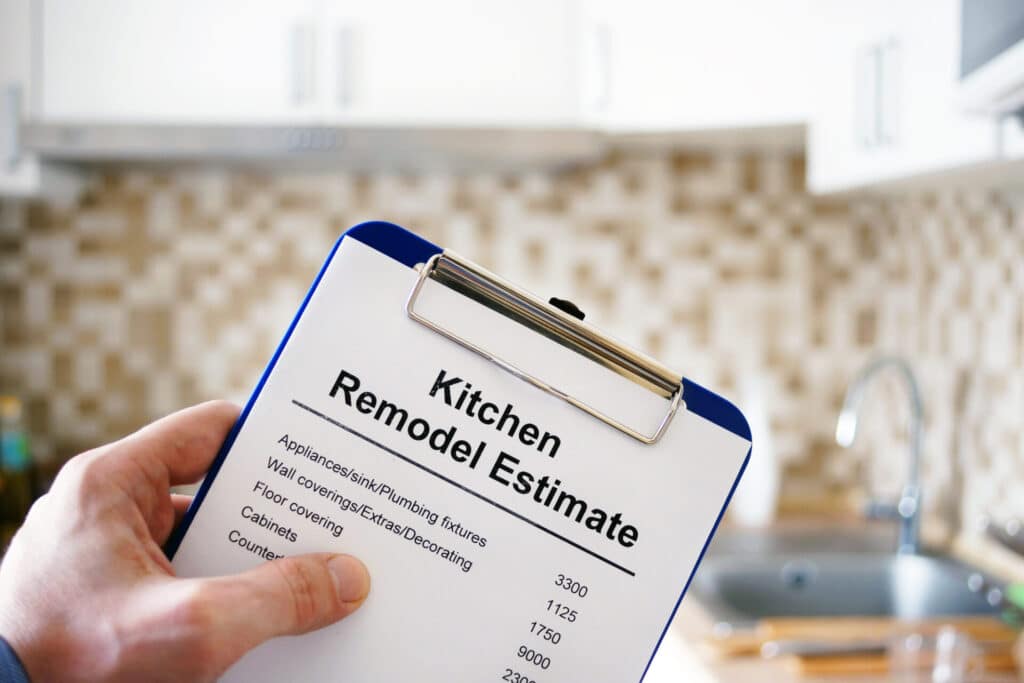
Remodeling a kitchen can be biggest and an exciting investment you will make in your home. It can transform an outdated and poorly functioning space into a beautiful and functional area that adds value to your home. However, as with any home improvement project, the cost of a kitchen remodel can vary greatly depending on the scope of work and the materials used. Here are the different factors that can influence the cost of a kitchen remodel and provide some tips for managing your budget.
1. Scope of Work
The scope of work refers to the extent of the remodeling project. Are you planning to simply update the cabinets and countertops, or will you be making structural changes to the kitchen layout? The more extensive the project, the higher the cost is likely to be. Here are a few common elements that can contribute to the scope of work:
1.1. Cabinets:
Installing new cabinets or refacing existing ones can be a major expense in a kitchen remodel. Custom cabinets will generally cost more than stock cabinets, so consider your budget and design preferences when choosing the style and material.
1.2. Countertops:
The cost of countertops can also vary greatly depending on the material you choose. Granite and quartz countertops are popular options, but they tend to be more expensive than laminate or tile.
1.3. Appliances:
Upgrading your appliances can add a significant cost to your kitchen remodel. Stainless steel appliances are often more expensive than white or black ones, so consider your budget and the overall style of your kitchen before making a decision.
1.4. Flooring:
Replacing the flooring in your kitchen can give it a whole new look, but it can also be a major expense. Hardwood and tile flooring can be more expensive than laminate or vinyl, so consider your budget and lifestyle needs when choosing the material.
1.5. Lighting:
Updating the lighting in your kitchen can make a big difference in both functionality and ambiance. Recessed lighting and pendant lights are popular options, but they can add to the cost of your remodel.
2. Size of the Kitchen
The size of your kitchen can also affect the cost of a remodel. Larger kitchens will generally require more materials and labor, which can increase the overall cost. However, it’s important to note that the cost per square foot may decrease as the size of the kitchen increases. This is because certain fixed costs, such as plumbing and electrical work, will be spread out over a larger area.
3. Quality of Materials
The quality of the materials used in your kitchen remodel will also play a role in the overall cost. Higher-quality materials, such as custom cabinets and high-end appliances, will generally be more expensive than lower-quality options. However, it’s important to consider the durability and longevity of the materials when making your selection. Investing in higher-quality materials can save you money in the long run by reducing the need for repairs and replacements.
4. Labor Costs
Labor costs can change drastically depending on the location and project complexity. Hiring a contractor in Santa Rosa ensures that the work is done correctly and efficiently, but it can also add to the cost of your remodel. It’s important to obtain multiple quotes from reputable contractors and carefully review their references and past work before making a decision.
5. Permitting and Inspections
Depending on the scope of work, you may need to obtain permits and have inspections done as part of your kitchen remodel. These additional costs can change depending on where your located and the specific requirements of your municipality. It’s important to factor these costs into your budget and allow for any potential delays that may occur during the permitting and inspection process.
Tips for Managing Your Budget
While the cost of a kitchen remodel can be significant, there are several strategies you can use to help manage your budget:
Set a Realistic Budget:
Before you begin your project, calculate how much you are prepared to spend on your kitchen remodel. Be sure to factor in the cost of materials, labor, permits, and unforeseen expenses.
Prioritize Your Needs:
If your budget is limited, focus on the elements of your kitchen that are most important to you. Consider what changes will have the biggest impact on your kitchen’s overall look and functionality.
Consider Alternatives:
Look for ways to save money without compromising on quality. For example, consider refacing or repainting your existing cabinets instead of installing custom cabinets. Instead of replacing all of your appliances, consider upgrading just one or two.
Shop Around:
Take the time to check around for the best prices on materials and appliances. Check with multiple suppliers and online retailers to compare prices and take advantage of any sales or discounts that may be available.
DIY vs. Hiring a Professional:
Depending on your skill level and the complexity of the project, you may be able to save money by doing some of the work yourself. However, it’s important to be realistic about what you can handle and hire a Santa Rosa general contractor for any tasks beyond your expertise.
Plan Ahead:
Thorough planning is crucial when it comes to managing your budget. Create a detailed timeline and budget for your kitchen remodel and stick to it as closely as possible. Allow for unexpected expenses and be prepared to make adjustments along the way.
In conclusion, the cost of a kitchen remodel varies greatly on a variety of factors, including the scope of work, size of the kitchen, quality of materials, labor costs, and permitting and inspections. Setting a realistic budget, prioritizing your needs, shopping around, and carefully planning your project can help you manage your budget and achieve the kitchen of your dreams without breaking the bank.
